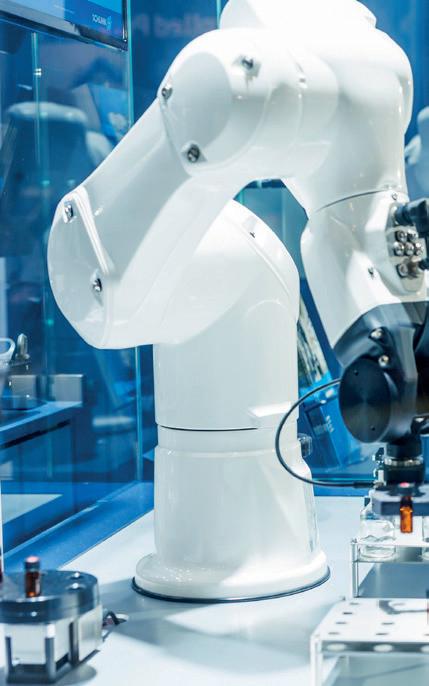2 minute read
stimulation could prevent falls & muscles – study finds
Next Article
Mechanical vibrations could help improve our muscles and our balance control, according to research at Aston University.
Researchers in the College of Engineering and Physical Sciences have examined the effect of stimulation on muscle spindles which ‘speak’ to the central nervous system to help keep us upright and walk straight.
Their results provide new perspectives on whole-body vibration applications, paving the way for future research on the interaction between the central nervous system and the peripheral muscles.
The research could be applied to improve balance in older people and help reduce falls, this could be applied through either wearable devices or with a daily session of stimulation.
Hip fractures alone account for 1.8 million hospital bed days and £1.1 billion in hospital costs every year, excluding the high cost of social care.
The goal of the study was to find out if mechanical vibrations can improve the way our bodies process and react to small body oscillations.
Seventeen young male and female adult volunteers aged between 20 and 28 years old stood individually on platforms, similar to vibrating plates found in gyms, which caused leg muscle contractions. Calf muscles were targeted as the muscles whose action contribute the most to maintaining a stable upright posture.
The researchers stimulated their calves with a frequency of 30Hz and recorded four oneminute trials of undisturbed balance to take a baseline measure and compared the readings to measurements taken after the stimulation. After conducting the experiment, they found that their balance seemed to have improved.
The research, Sensorimotor recalibration of postural control strategies occurs after whole body vibration, was led by Dr Antonio Fratini, senior lecturer in mechanical, biomedical & design engineering, and PhD student Isotta Rigoni, and has been published in Scientific Reports – Nature.
Dr Fratini said: “Our results indicate that whole body vibration challenges balance at first, triggering a bigger effort to control the upright stance and shifting muscle modulation toward supraspinal control, resulting in a recalibration of muscle recruitment. The neuromuscular system seems to recover from such disruption and regain control over a longer time interval.”
Specialists at the Centre of Excellence in Mobile and Emerging Technologies (CEMET), which is based at the University of South Wales (USW), have been working with Cardiff-based Advanced Medical Simulation Online (AMSO) on developing a proofof-concept for the remote technology.
If it is proved to work successfully, the technology may allow AMSO’s to offer remote training to users across the globe.
Professor Nazar Amso, chief executive of AMSO, said: “The business was established in 2015 to support skills training for healthcare professionals, with many using our resources from across the globe. This included people in the Bahamas, Middle East, Fiji, and New Zealand, who can access the training remotely day and night.
“While we covered the knowledge and were able to assess if they knew what was being taught, we were unable to assess if the ‘handson’ parts of the training has been adequately understood unless the students were able to attend at our simulation centre in Cardiff - which would obviously be costly for students living thousands of miles away.
“This limitation was further accentuated during the COVID-19 pandemic and the impact it had on students accessing clinical training in their own place of work. So, we needed to develop a system which could allow the students to prove their skills through immersive virtual reality.”
The presentations were packed and there was clearly a lot of interest. A good and healthy mix of innovators, experts and funders all in one place.











